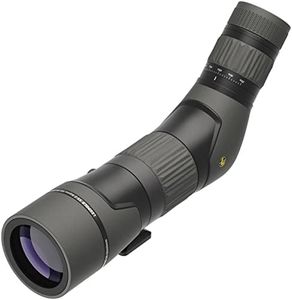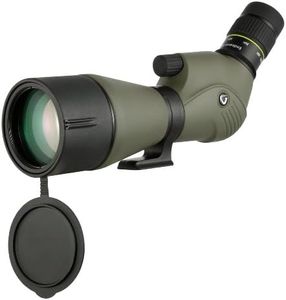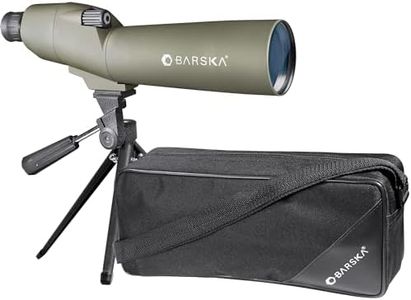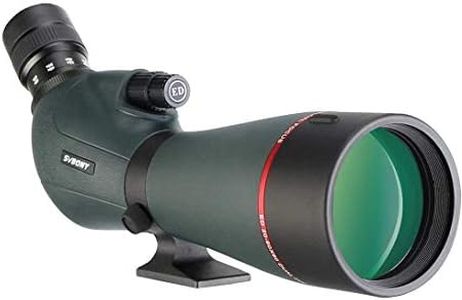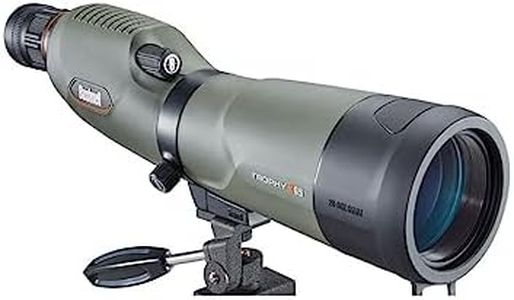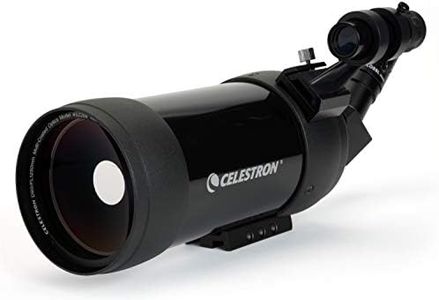We Use CookiesWe use cookies to enhance the security, performance,
functionality and for analytical and promotional activities. By continuing to browse this site you
are agreeing to our privacy policy
10 Best Spotting Scopes
From leading brands and best sellers available on the web.Buying Guide for the Best Spotting Scopes
Choosing the right spotting scope can make a big difference if you enjoy activities like birdwatching, wildlife observation, hunting, or even photography. The right scope brings distant subjects closer, providing clear and bright views in a variety of conditions. Your needs should guide your decisions: think about when, where, and how you plan to use the scope, whether you’ll mostly be on the move or staying in one spot, and what you want to observe. Understanding the essential features and specs can help you find a spotting scope that suits your purpose perfectly.Magnification PowerMagnification describes how much larger or closer objects will appear compared to what you see with the naked eye. Spotting scopes usually offer variable magnification, such as 15-45x or 20-60x. Lower magnification (15-30x) provides a wider, brighter view, making it easier to locate and track moving subjects and giving a steadier image even without a tripod. Higher magnification (45-60x) brings more detail but can make images shakier and harder to keep bright, especially in low light or with air disturbance. If you’re mostly observing at shorter to moderate distances or want a clearer, wider view, go for lower magnification. If close-up details at long distances are more important, higher magnification will help—but be ready to use a stable tripod and possibly sacrifice some brightness.
Objective Lens DiameterThe objective lens diameter is the size of the front lens of the spotting scope, measured in millimeters. Larger diameters (like 80mm or above) allow more light to enter, resulting in brighter, clearer images, especially useful in dawn, dusk, or cloudy conditions. Smaller lenses (50-65mm) make the scope lighter and more portable but offer less brightness, especially at higher magnification. If you plan on hiking a lot or carrying your scope over long distances, a more compact lens may suit you best. For stationary use, such as backyard birdwatching or target shooting at a range, a larger objective lens will help you see more detail.
Angled vs. Straight EyepieceSpotting scopes come with eyepieces that are either in line with the body (straight) or at an angle (usually 45 degrees). Straight eyepieces are quick and intuitive to use, especially when spotting subjects on the same level, and are great for moving targets. Angled eyepieces are better for looking up into trees or sharing the scope with others of different heights, as the angle makes long sessions more comfortable. Think about your typical viewing position and whether you’ll be sharing the scope to decide which style fits your habits best.
Field of ViewField of view refers to the width of the area you can see through the scope at a certain distance, usually measured in feet at 1000 yards or meters at 1000 meters. A wider field of view makes it easier to find and follow moving subjects, but this usually comes with lower magnification. Narrower fields focus in on your subject, useful for detailed observation but harder for scanning large areas. If you want to track birds or wildlife in motion, choose a spotting scope with a wider field of view. If detailed study of stationary objects is your main goal, a narrower but more focused view is acceptable.
Close Focus DistanceClose focus distance tells you how close an object can be while still remaining in sharp focus through the scope. A shorter close focus is useful if you want to observe nearby birds, insects, or plants in great detail. For most users, the minimum close focus is not a dealbreaker unless you expect to use the scope for very close objects. Decide based on your intended subjects: if you’re interested in distant shorebirds, close focus won’t matter much, but it’s important for backyard or garden observation.
Waterproof and Fogproof ConstructionA spotting scope’s durability in wet or humid weather depends on whether it is sealed against water and purged against fogging. Waterproofing ensures that rain or accidental splashes won’t damage the internal parts. Fogproofing (often with nitrogen- or argon-filled barrels) means the lenses won’t fog up from sudden temperature changes. If you’ll be using the scope outdoors in unpredictable weather, or frequently moving between different environments, choosing a weather-resistant model will keep your views clear and protect your investment.
Weight and PortabilityThe weight and physical size of a spotting scope can greatly affect how and where you use it. Heavier, larger scopes usually perform better in gathering light and providing detail, but are less convenient to carry and set up. Lightweight, compact scopes can fit in a backpack and are easier for hiking or travel, though you may sacrifice some image quality, especially in challenging light. Think about whether your activities involve a lot of movement or are mostly stationary, and pick a scope that matches your ability to comfortably carry or transport it.


